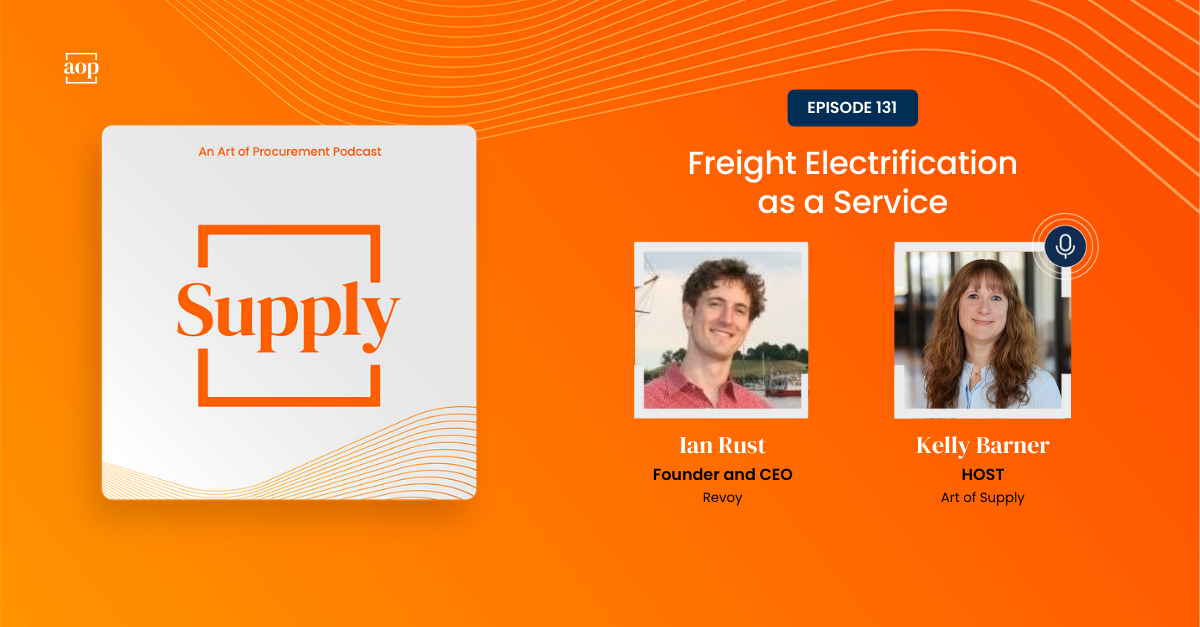
The need for freight, and its impact on humanity, can be traced back as far as the Silk Road across Europe and Asia. As new modes of transportation have become available, each one was tested for its ability to improve speed, reliability, and cost.
The transition underway in freight today is the use of electrified vehicles. Despite the clear incentive to reduce the fossil fuel consumption and emissions associated with trucking, many challenges still remain – in large part because the most common approach is replacing the standard diesel tractor with an electrified one.
What if there were a better approach, a way to electrify trucking that is less of a one-to-one swap out of equipment and more of a modification to the equipment itself?
That is the approach I spoke with Ian Rust, Founder and CEO of Revoy, about.
How it Works
Revoy essentially offers “electrification as a service” as Ian explained to me. “We’ve developed a first of its kind vehicle type. It integrates with any diesel, semi-truck on the road today. […] In a matter of two minutes, it brings in a pre-charged battery pack of renewable power and dispenses that power onto the road to help move the load with the diesel truck.
“That lowers the power demand on the diesel truck really significantly, down to 10 percent, maybe sometimes 5 percent of what it previously was doing. In that way, it just shifts the power demand over to our vehicle. It’s a very quick application of renewable power.”
Whenever the battery runs low, the driver can stop into a Revoy station and swap out for a fully charged one.
Two thoughts occurred to me as Ian explained his approach to electrified freight.
The first is that they have applied a ‘Pony Express’ model to road freight. Whether we are talking about EVs in the context of passenger cars or long haul freight, distance limitations are always part of the conversation. Ironically, that is an old problem that is new again.
Horses also had distance limitations, especially when rode at top speed. Pony Express riders would swap out their horse every 10-15 miles, and swap out riders every 70-100. By doing so, they were able to move mail over long distances and at a previously unthinkable speed for the time. That same principle is being applied here.
The other thought that occurred to me is that the transition to electrified freight is as much about the business model as it is technology or infrastructure. The cost has to be manageable if EV freight is going to achieve mass adoption.
Speed Limit on Change
Ian and I also spoke about how foundational freight is from an economic perspective. Even desired change has to be implemented with great care to prevent disruption. By mimicking a fuel stop, Ian introduces a level of change that the system as a whole can absorb.
“The only difference is that instead of hooking up a pump to the fuel tank and pumping liquid fuel, liquid chemical energy into the fuel tank, you’re hooking up a pre-charged battery pack, and that’s the energy into the tow hitch and then having that just help move the load,” Ian said. “It’s a different energy delivery mechanism, but in terms of the operating model, it’s nearly identical.”
Like any other systems or process change, Ian understands that adoption is the key. The changes have to be beneficial to everyone, and made possible without needing to “mess with the bones of it from the get go.
Moving to electrified freight has to offer benefits to shippers, carriers, drivers, consumers, and communities. This means managing costs, guarding against increased delays and downtime, and ensuring that all progress is incremental, realizing the desired change, but not pushing faster than anyone is ready for.
Let Private Industry So What They Do Best
Since the pace of change is important, I wanted to know what Ian thought about the role of state and federal regulations in the transition to electric vehicles. The associated financial incentives are the carrot, but regulators always reserve that ‘stick’ to ensure change is made.
Ian sees both highlights and lowlights in using regulations to drive the EV transition. “I think the EPA rules are very good, they are reasonable,” he said. “It’s not a wholesale drive to zero emissions, it’s a significant reduction, but with some acceptance that it’s going to take time and we’re not going to wholesale rip out diesel from the supply chain in that timeframe.”
The lowlights? Mandates and overly prescriptive requirements that tell private industry what to do instead of giving them targets and allowing them the space to innovate their way to change.
“If we want to lower emissions, which is ultimately what all of this is trying to do, let’s regulate emissions,” he pointed out. “And let’s let the private sector do what we do best, which is innovate to meet those goals. Let’s look at all possible technologies and figure out what wins in the market. That’s going to be most successful.”
For change to be lasting, it must be carried out in phases. For a chance as substantial as the transition to electrified road freight, that change must be advanced in phases, backed by incentives, rewarded by competitive advantage, and encouraged but not mandated at the tactical level. All of this combined ultimately avoids a “shock to the system” as Ian put it.
Anything is possible when innovation is alive. The Pony Express didn’t last long, but it changed how we look at communications and transportation forever. EV progress can do the same, one step at a time, if we open our minds to new approaches and give it the time to find a way to flourish.




